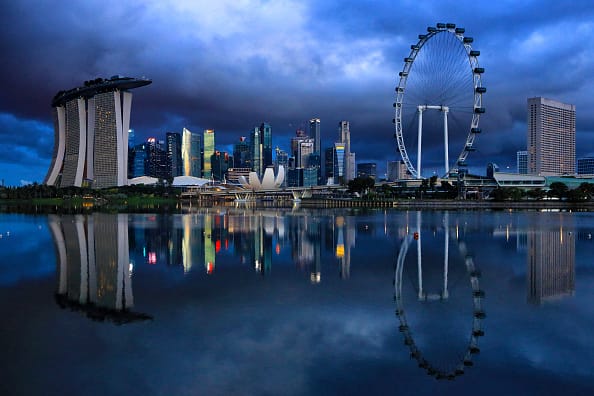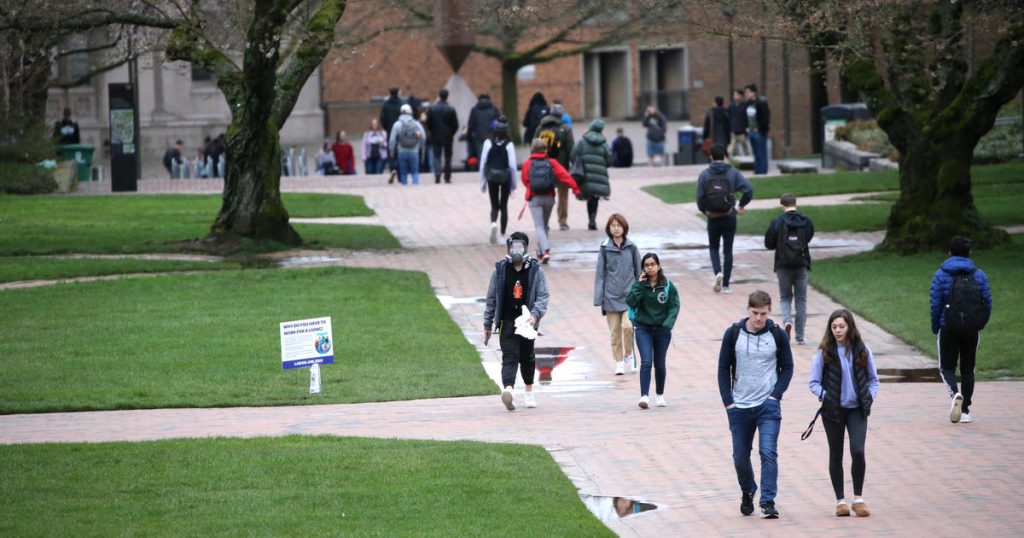
A general view of the Marina Bay Sands, the ArtScience Museum, the Singapore Flyer and the central business district on June 19, 2020 in Singapore.
Suhaimi Abdullah | Getty Images
Singapore’s economy entered a technical recession after shrinking by 41.2% in the second quarter compared to the previous quarter, advance estimates by the Ministry of Trade and Industry showed on Tuesday.
The latest gross domestic product estimate — computed largely from data in April and May — was worse than analysts’ forecast. Economists polled by Reuters had expected the Southeast Asian economy to shrink by 37.4% quarter-over-quarter.
A technical recession is defined as two consecutive quarters of quarter-on-quarter contraction. In the first three months of the year, Singapore reported a 3.3% decline in gross domestic product compared to the preceding quarter.
Compared to a year ago, the Singapore economy contracted by 12.6% in the second quarter. That’s also worse than the 10.5% forecast by analysts in the Reuters poll.
The economic performance in the second quarter worsened due to the implementation of partial lockdown measures — which the Singapore government called a “circuit breaker” — aimed at reducing the spread of the coronavirus.
Those measures, which started in early April, involved shutting most workplaces (except those offering essential services) and closing all schools temporarily. The “circuit breaker” lasted nearly the entire second quarter, with the Singapore government easing some measures starting in early June.
The restrictions hurt businesses dependent on domestic consumption at a time when external demand for Singapore goods was also “weak” due to “a global economic downturn precipitated by” the coronavirus pandemic, the ministry said.
Here are how the different sectors within Singapore’s economy performed in the second quarter:
- Manufacturing expanded by 2.5% year-on-year;
- Construction plunged 54.7% compared to a year ago;
- Services-producing industries contracted by 13.6% compared to the same period last year.
ingapore, a city state with a population of 5.7 million, has reported one of the highest numbers of coronavirus cases in Southeast Asia, according to data compiled by Johns Hopkins University.
As of Monday, the country has confirmed more than 46,200 people infections and 26 deaths, according to its health ministry.
The coronavirus pandemic, which is one of the biggest threats to the global economy, could drag Singapore into its worst economic recession this year. The government has projected an annual contraction of between 4% and 7% for 2020.
But Alex Holmes, Asia economist at consultancy Capital Economics, said activity in Singapore has rebounded since the easing of partial lockdown measures last month.
“While many industries, notably tourism and hospitality, will continue to suffer, the economy should rebound faster than others in the region,” he wrote in a note last week previewing Singapore’s second quarter economic performance.
“The key reason for optimism is the record size of the government’s stimulus package, which is equivalent to around 20% of GDP,” he added.
Singapore has unveiled four stimulus packages totaling about 100 billion Singapore dollars ($70.4 billion) so far this year, in an effort to support businesses and household that have been severely impacted by the the coronavirus outbreak.

